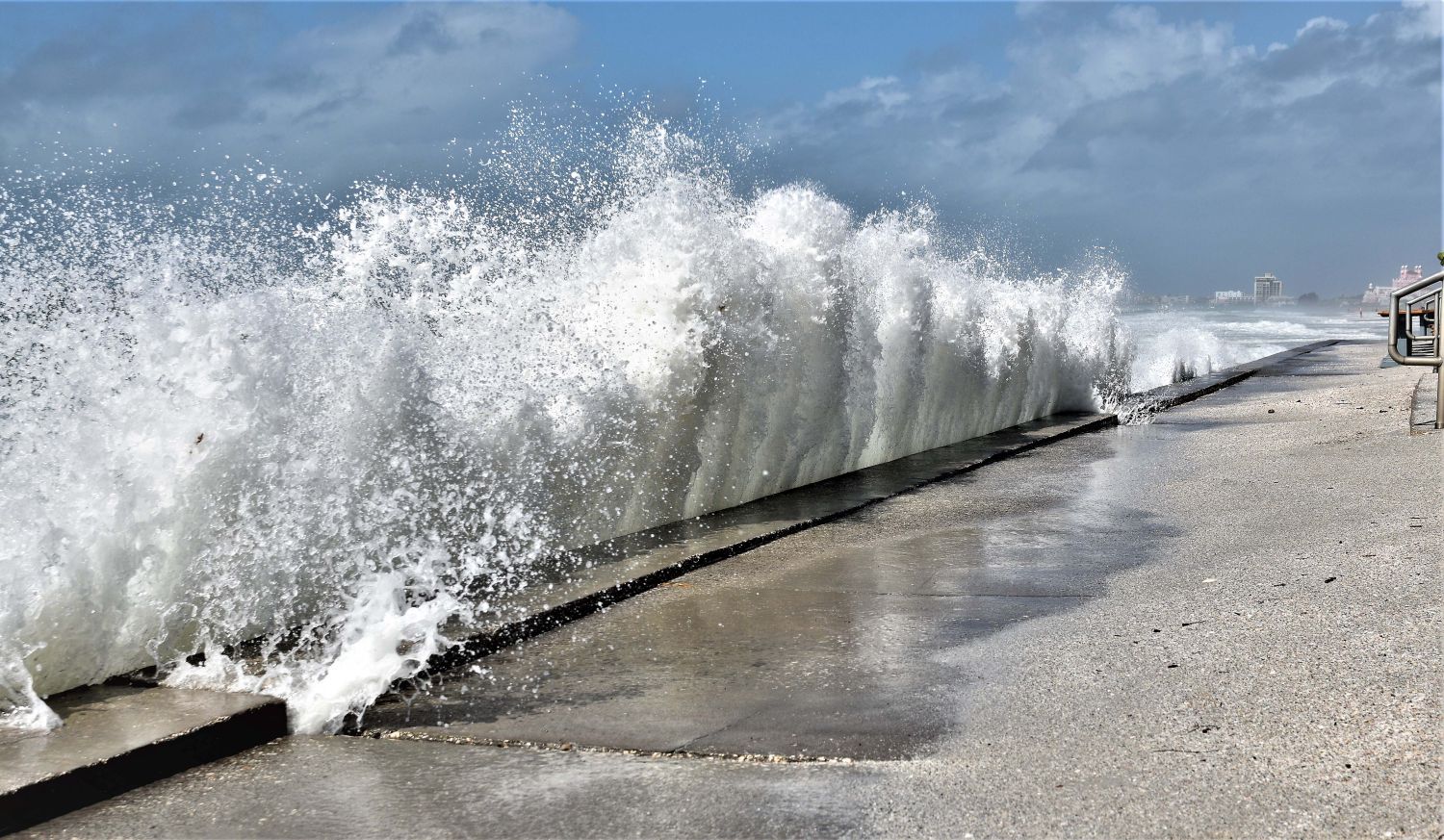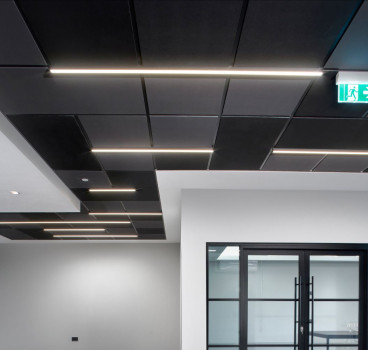Building for a warmer, wetter and less predictable future
The conversation about sustainability in the construction industry has for too long been dominated by the phrase “green building.” It has become a shorthand for energy-efficient offices, homes with triple-glazing and developments that tick boxes for renewable energy use. These measures remain important, but they are no longer enough. The industry’s role has evolved beyond simply reducing emissions during construction or operation. It now includes creating infrastructure that can withstand and adapt to extreme weather, rising sea levels and prolonged droughts, writes John Ridgeway.
Around the world, construction is being asked to reduce its own contribution to climate change while building defences against its inevitable impacts. Every year brings fresh evidence that climate volatility is accelerating. Record-breaking rainfall leads to devastating floods, summer heatwaves strain urban infrastructure and coastal erosion threatens entire communities. The structures we build today must stand in conditions more severe than those faced by their predecessors. This makes resilience an engineering priority on par with cost and safety.
Sea walls and coastal barriers are among the most visible examples of construction’s adaptation role. Countries with long coastlines or densely populated coastal zones, such as the UK, the Netherlands and Japan, are investing heavily in protective defences. These projects are not simply taller versions of existing barriers. They are increasingly complex systems designed to absorb, redirect, or dissipate wave energy, often incorporating natural features such as salt marshes and mangrove planting to work in harmony with engineered structures.
The Netherlands’ Maeslantkering storm surge barrier, for example, is a movable structure of vast gates that can close to protect the port of Rotterdam. Its design anticipates once-in-a-century storms becoming far more frequent. In the UK, projects like the Thames Barrier have shifted from rare emergency use to more regular operation and discussions are already underway for its eventual replacement to cope with higher sea levels and more severe weather events.
Related read: How mandatory SuDS are reshaping UK drainage standards.
High risk zones
Flood-proof housing is another area where construction must adapt rapidly. In flood-prone regions, the old model of simply building higher embankments is giving way to solutions that accept occasional flooding as inevitable. This means creating homes designed to survive inundation with minimal damage. Materials that resist water penetration, raised electrical systems and layouts that place living spaces above flood level are increasingly specified in high-risk zones.
In the United States, after Hurricane Katrina, entire neighbourhoods in New Orleans were rebuilt on raised foundations, while in the UK, experimental developments in Hull and elsewhere are trialling amphibious housing that can float during severe floods. These are not luxury concepts - they are practical responses to risks that will only grow.
Heat resilience is an equally urgent priority. As global temperatures rise, cities are facing the urban heat island effect with dangerous consequences for public health. Construction has a direct role in mitigating this through the design of buildings, streetscapes and public spaces. Passive cooling strategies, such as reflective roofing materials, increased shading through awnings or tree planting and cross-ventilation layouts, reduce reliance on energy-intensive air conditioning. Urban design can also reduce heat retention by replacing expanses of dark asphalt with lighter, permeable materials that reflect sunlight and allow water infiltration. Singapore, a leader in tropical urban resilience, has integrated green roofs and vertical gardens into its high-rise architecture, lowering surface and ambient temperatures while improving biodiversity.
Water scarcity presents another dimension of climate resilience. Prolonged droughts are already affecting construction planning in parts of southern Europe, the western United States, Australia and Africa. For the construction industry, this means integrating water-saving systems into new builds and retrofits as standard practice. Rainwater harvesting, greywater recycling and low-flow fixtures are well-established technologies, but their deployment is still uneven. In water-stressed regions, building codes are starting to mandate them. Beyond individual buildings, the industry also contributes to resilience by constructing large-scale water storage and desalination facilities, which will be critical in sustaining urban populations as natural freshwater sources become less reliable.
Infrastructure resilience extends beyond direct environmental threats to include supply chain and operational continuity. Extreme weather can disrupt transport networks, power supplies and communication systems. Construction must deliver bridges, roads and railways that can withstand not only the slow stresses of climate change, but sudden shocks from storms, flooding, or landslides. In Japan, transport infrastructure is routinely designed with seismic and flood resistance in mind, while in Australia, road and rail projects in the north are now engineered to cope with both prolonged flooding and extreme heat that can buckle rails and soften asphalt. The trend is clear - resilience is no longer a regional speciality; it must be built into every project’s specification regardless of location.
More resilient design
The financial dimension of climate adaptation in construction is also shifting. Insurance costs are rising sharply for assets in high-risk zones and in some cases, coverage is being withdrawn altogether. This makes resilient design not only a safety measure, but a financial necessity for property owners and developers. Investors and financiers are increasingly scrutinising climate risk exposure before backing projects. In the United States, the Securities and Exchange Commission has proposed rules requiring companies to disclose climate-related risks in their public filings, a move that will inevitably affect large construction clients. In the UK and Europe, similar disclosure frameworks are being developed. These changes mean construction professionals must now be conversant not only in engineering and design, but in risk assessment and financial resilience.
Importantly, climate resilience is not a one-size-fits-all concept. Local geography, climate patterns and community needs dictate different approaches. A coastal town vulnerable to storm surges faces a different threat profile to an inland city susceptible to extreme heatwaves. Successful adaptation projects are rooted in detailed local data - on flood modelling, wind speeds, temperature projections and soil stability. This demands close collaboration between architects, engineers, environmental scientists and local authorities. Without this interdisciplinary approach, there is a risk of over-engineering in some areas and under-preparing in others.
Retrofitting existing infrastructure is perhaps the greatest challenge of all. New builds can be designed with resilience in mind from the outset, but much of the world’s infrastructure was constructed for a climate that no longer exists. Bridges may not be rated for the flooding now expected - drainage systems may be undersized for the rainfall volumes projected - coastal defences may have settled or eroded. The cost of upgrading or replacing this infrastructure will be immense, but postponing action will only make the task more expensive and urgent. In some cases, managed retreat - relinquishing land to the sea or river - is being considered as a last resort, a deeply disruptive, but sometimes unavoidable choice.

Materials innovation is another key tool in construction’s climate adaptation arsenal. Traditional concrete and steel remain vital, but their performance is being enhanced with additives and treatments to improve durability against extreme conditions. High-performance concretes can resist chloride ingress in marine environments for longer, extending the life of sea walls and port structures. Advances in timber engineering allow for flood-resilient wooden structures that can be repaired rather than demolished after water damage. These innovations not only extend asset life, but also reduce the embodied carbon of reconstruction and repair.
Risk assessments
Regulatory frameworks are catching up, though unevenly across jurisdictions. Some countries are moving quickly to integrate resilience into building codes and planning requirements, while others lag behind. In the UK, the Environment Agency’s flood risk assessments are now a mandatory part of major planning applications in vulnerable zones. In the US, the Federal Emergency Management Agency offers funding incentives for projects that incorporate hazard mitigation. Internationally, organisations like the Global Resilient Cities Network are sharing best practice to accelerate uptake. The construction industry cannot afford to wait for regulation to drive change - proactive resilience measures are increasingly seen as a competitive advantage.
Public perception and political will also shape the speed of adaptation. After a major flood or storm, there is usually a surge in support for resilient infrastructure investment. However, as memories fade, so can urgency, leading to funding gaps and unfinished projects. The construction industry has a role to play in maintaining public and political attention on resilience, communicating the tangible benefits in terms of safety, economic stability and long-term cost savings. Demonstrating that resilient infrastructure not only prevents loss, but can actively enhance communities- through better public spaces, greener environments, and improved services - helps secure lasting commitment.
The concept of climate-resilient infrastructure goes beyond defence and survival. It includes designing for recovery and adaptability. Buildings and systems that can be quickly repaired, reconfigured, or repurposed after an event will be vital. Modular construction methods, for example, allow damaged sections to be replaced without demolishing the whole structure. Decentralised energy systems, such as microgrids, can keep critical facilities powered during wider outages. Digital monitoring systems embedded in bridges, tunnels and flood defences can detect strain or damage early, enabling pre-emptive repairs before failures occur.
The construction industry’s role in fighting climate change is therefore twofold - mitigating future impacts through low-carbon practices and renewable integration and adapting existing and new assets to withstand the changes already in motion. These goals are not mutually exclusive - they are mutually reinforcing. A flood-resilient housing development built using low-carbon materials addresses both immediate and long-term challenges. The projects that will define the industry’s reputation in the coming decades will be those that integrate these strands seamlessly.
Additional Blogs

When fire breaks out who really knows the system
The story that caught my attention recently wasn’t about fire growth or building loss, it was about confusion. Specifically, the confusion faced by the fire service when arriving at buildings...
Read moreThe design and development of Nexus Layouts
When Zentia set out to rethink the suspended ceiling, the brief was clear: deliver greater creative freedom for designers, more distinctive visual identity for clients, and a solution that could keep...
Read more

The 100-year construction project or why longevity Is the new sustainability
For decades, the construction sector has defined sustainability through metrics such as operational energy, embodied carbon, material efficiency and circularity. These measures remain vital, but a...
Read more